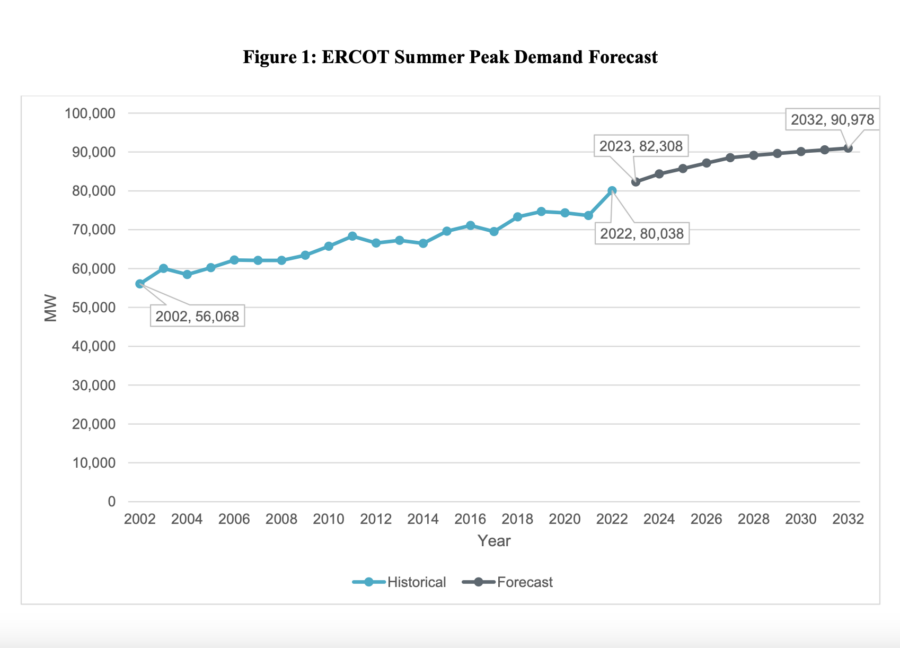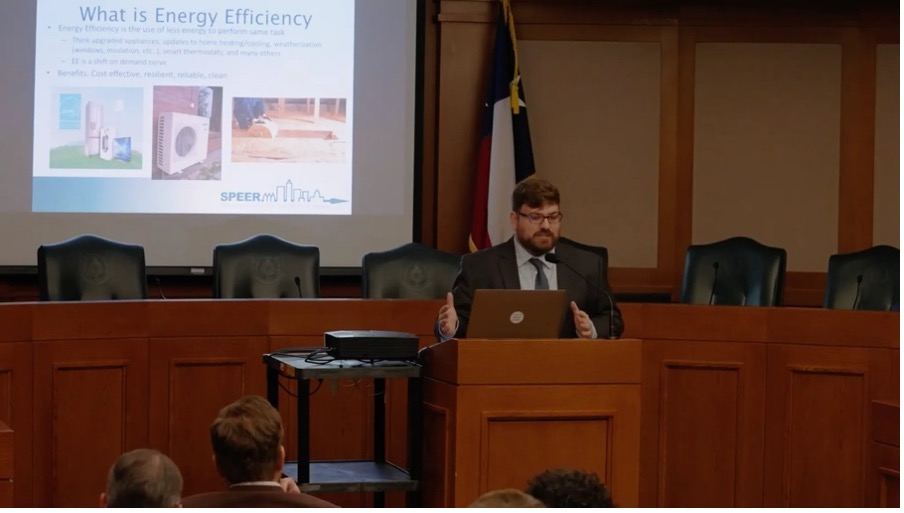Energy efficiency can play a pivotal role in solving some of the biggest challenges SPEER’s south-central region is experiencing: Resource adequacy, or grid reliability, and resilience during our summer heat waves and increasing winter storms, as Texas has recently experienced with Uri. Although shinier and new electrifying technologies are more widely discussed in the energy world – green hydrogen, heat pumps, electric vehicles and residential solar paired with batteries – energy efficiency is the unsung hero. The International Energy Agency (IEA) refers to energy efficiency as the “first fuel” because it provides some of the quickest and most cost-effective solutions to reduce greenhouse emissions, improve air quality, lower energy bills, and strengthen energy security.
Don’t get us wrong, the components mentioned above are important for a clean grid and necessary to help achieve our greenhouse gas reduction goals while improving our environment and air quality, but energy efficiency is the least expensive tool we have to reduce demand and electricity use, and it can be implemented now. While policies stand in the way of its full potential, especially in the ERCOT market, energy efficiency can help stabilize the grid and reduce the risks of power outages when we need to keep the lights on the most.
As of 2014, less than a decade ago, over two-thirds of Texas’ homes did not meet current code requirements, many of which were built prior to code enforcement. This means the majority of homes are old, leaky, and inefficient. As extreme weather becomes the new normal these inefficient homes and smaller commercial buildings put significant strain on the grid by consuming massive amounts of electricity in an effort to keep indoor temperatures comfortable and safe. However, for renters and homeowners there are a variety of ways to create a home centered around sustainability and efficiency as our blog How Texas Homeowners Can Create A More Energy Efficient Home lays out.
We cannot mention efficiency without covering about how necessary efficiency upgrades and programs are to low-to-moderate income (LMI) and hard to reach markets. Texas may be the nation’s energy capital but a survey by the Census Bureau Household Pulse found that the percentage of Texans that had to forgo spending on basic necessities such as medicine and food or transportation to afford their electricity bills was 11 percentage points higher than the national average of 34% and the Lone Star state ranked last among all states.
Many of these residents have inadequate living conditions and are saddled with sky-high energy bills during the ever-increasing weather events. Multi-family and LMI housing are often built with low cost as the primary factor and energy efficiency as an afterthought. SPEER implements many trainings in our territory to properly educate builders and inspectors, and increase energy code standards to improve these buildings that we spend up to 90% of our time in. Raising the minimum standards and implementing stronger building codes and retrofits to existing buildings for items such as windows, HVAC systems, and insulation products is vital for appropriately weatherizing homes and businesses. Too often the correct sizing of a home’s HVAC system is overlooked. This code requirement and will lead to many issues if the correct size of the heating and cooling system is not selected. This is reviewed and presented well in the YouTube recording of our Residential HVAC Load Calculations webinar.
SPEER continues to push for more energy efficiency adoption and education across our region of Texas and Oklahoma because we understand that implementing more efficient measures would save Texans, and all consumers, millions of dollars in cost each year. Did you know that Texas has the most energy efficiency savings potential? What does this mean? Texans could save more than 15% of their cost in electricity by 2035 simply if stronger energy efficiency measures were implemented by the utilities. By using energy more efficiently, we ultimately waste less and alleviate the need to build new expensive (and polluting) fossil fuel power generation which often takes years to come to fruition. Energy efficiency helps address energy burdens and puts money back into consumer’s pockets which then allows more money to flow into local economies.
As an educational organization, SPEER has monitored and provided educational input and testimonies where appropriate to lawmakers and legislative staff throughout the recent Texas and Oklahoma sessions. Following Winter Storm Uri in 2021 the Texas State Legislature passed a slew of bills aimed at increasing reliability to the Texas electric grid, however, there was still a significant need for legislative action this session. SPEER alongside utilities, Texas State Representatives and other energy experts spoke at the Capitol on Unleashing the Power of Energy Efficiency, because after all energy efficiency is quite powerful.
Photo credit: PowerHouse Texas
We know policy drives change and we will continue to promote energy efficiency efforts in the region by bringing together diverse stakeholders to build consensus around well-researched, cost-effective policies. Through these efforts SPEER will help in keeping the lights on for all Texans when we need them most.

